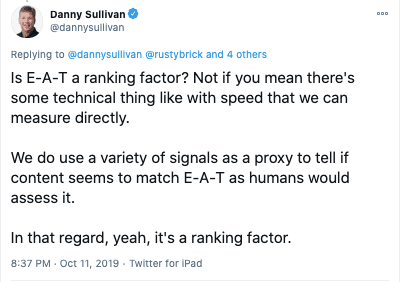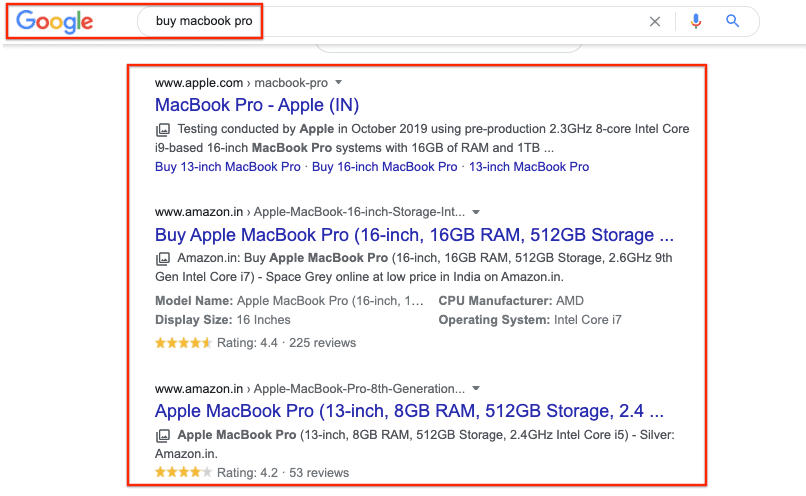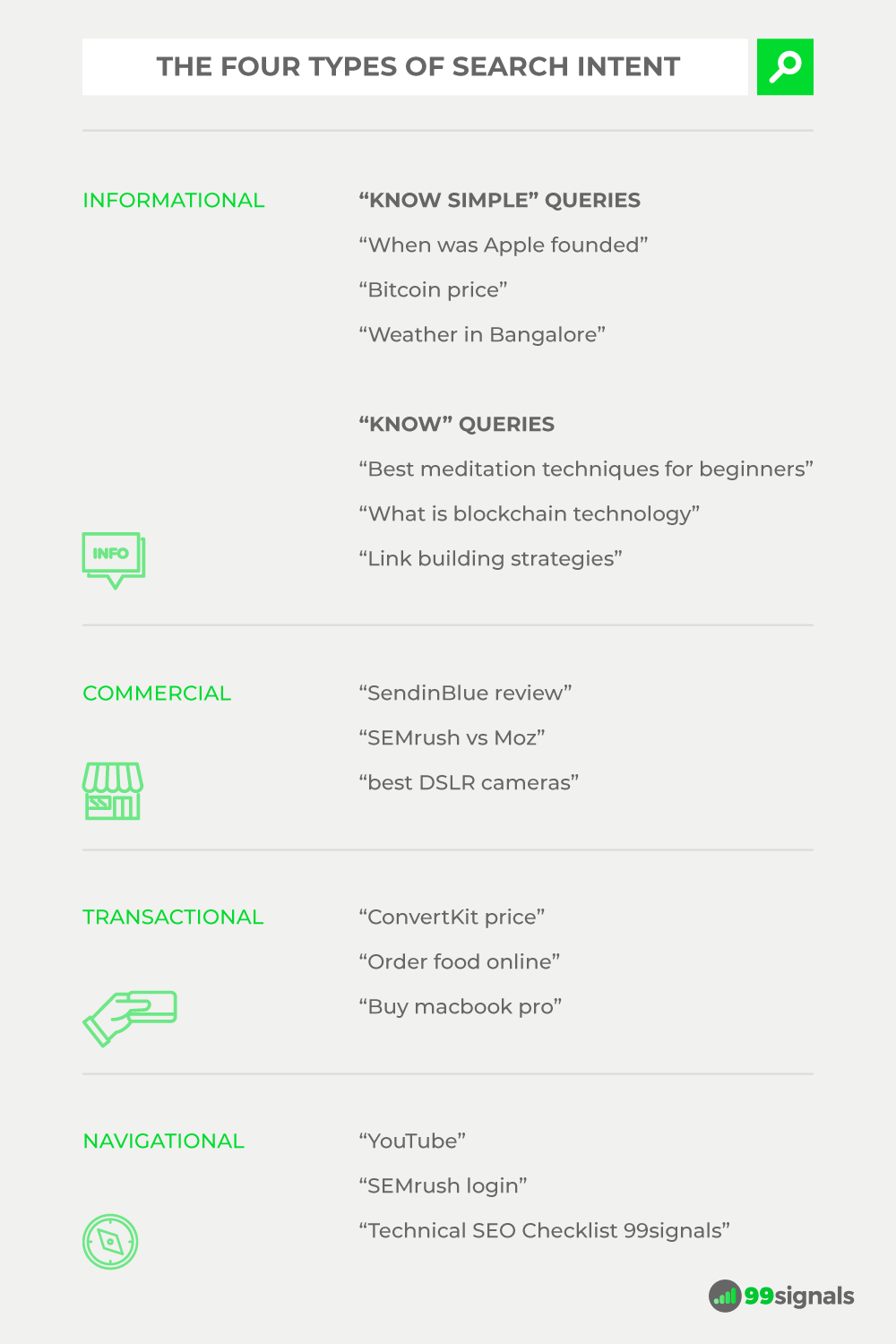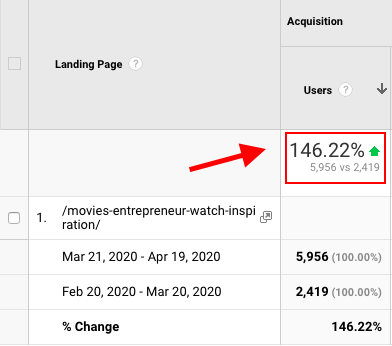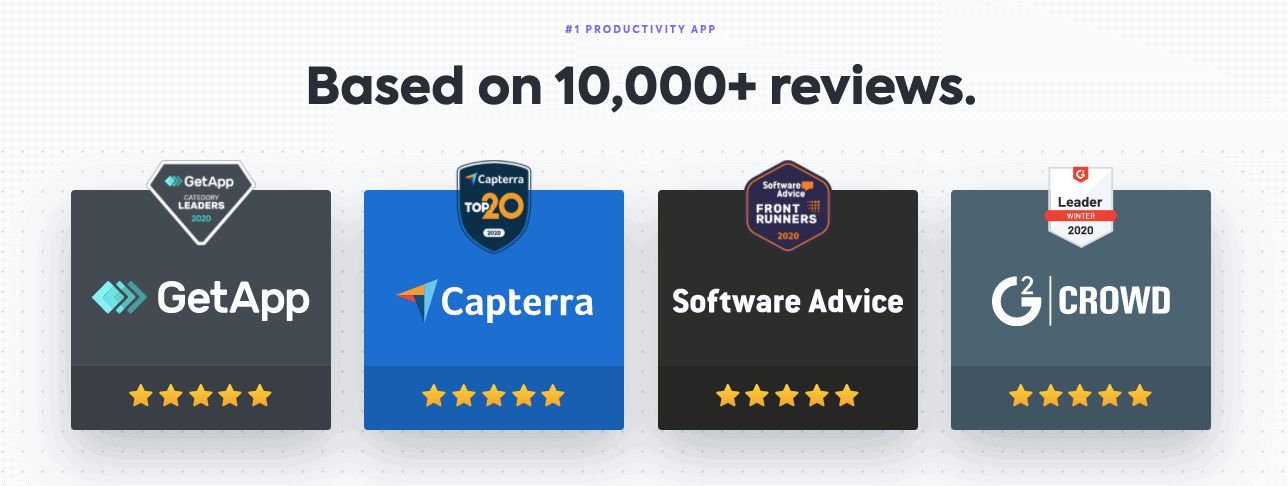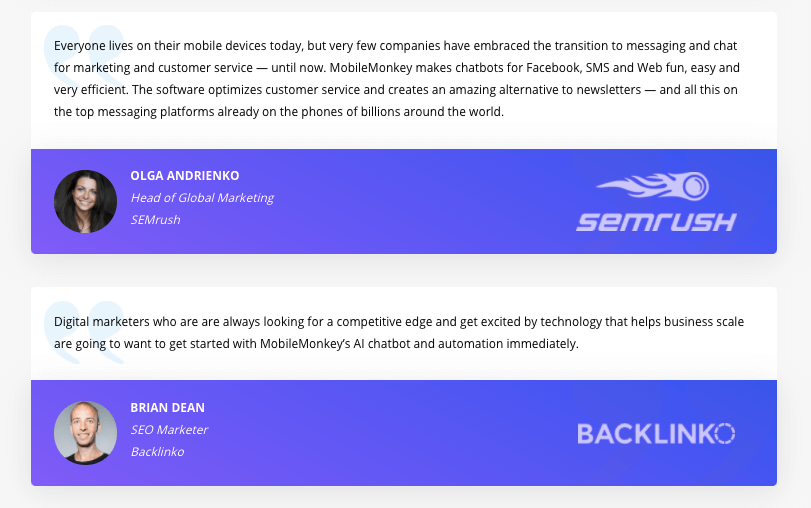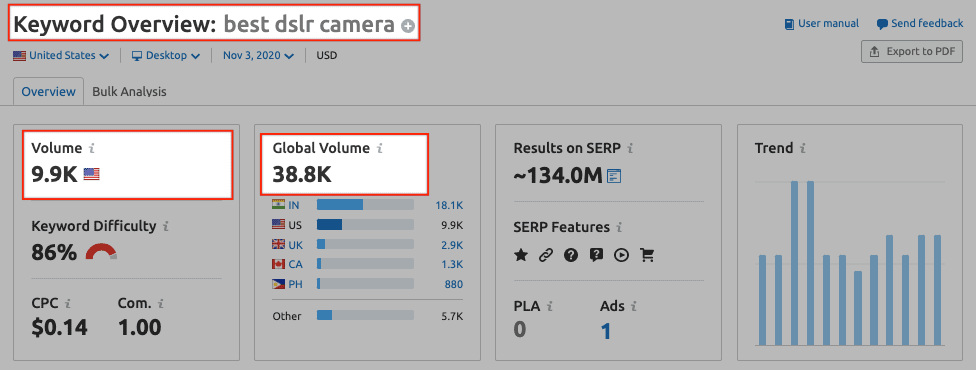The documentary covered a mountain of valuable insights on how Google search works and what goes on behind the scenes at Google. But most importantly, a small segment of the documentary focused on E-A-T and how much Google relies on this concept to rank pages on Google. The discussion around E-A-T starts around 20 minutes into the video:
Among other things, Google’s home movie highlights the importance of having a deeper understanding of how E-A-T works and how a grasp of E-A-T can help us improve the visibility of our content on Google. So I can picture you having all these questions in your mind right now:
What exactly is E-A-T? And how can E-A-T help you rank higher on Google? Is E-A-T a ranking signal?
These are the questions we’ll attempt to answer in this article. In this guide, we’ll cover:
What is E-A-T? How important is E-A-T? How is E-A-T measured? Is E-A-T a ranking factor? How to demonstrate EAT and rank higher on Google
So there’s a lot to unpack — let’s get started.
What is E-A-T?
E-A-T stands for Expertise, Authoritativeness, and Trustworthiness. It first became a part of the SEO lexicon when Google released its Search Quality Rater Guidelines (aka QRG) in 2015.
What is E-A-T?How Important is E-A-T?How is E-A-T Measured?ExpertiseAuthoritativenessTrustworthinessIs E-A-T a Ranking Factor?How to Demonstrate E-A-T and Rank Higher on Google1. Pay Attention to Search Intent2. Update Your Content3. Build Authoritative Backlinks4. Optimize Your Author Bio5. Get Reviews and Customer Testimonials6. Build Your Brand7. Do Keyword ResearchFinal Thoughts on Google E-A-T
In the document, Google makes it clear that E-A-T is one of the most important factors that the search giant looks into while evaluating the overall page quality. Despite being mentioned several times in the QRG, E-A-T only gained prominence in mid-2018 as pointed out by Ahrefs here:
This is when the queries for “E-A-T” on Google just exploded. Since then, there have been numerous debates and discussions on SEO forums and subreddits on the implication of E-A-T on search rankings. Expertise, authoritativeness, and trustworthiness are three completely different concepts. We’ll examine each one of these concepts individually in a bit. But before that, let’s understand the importance of E-A-T.
How Important is E-A-T?
The general consensus in the SEO community is that E-A-T is critical to ranking your pages on Google. In fact, E-A-T is so critical to Google that the term has been mentioned 186 times in the QRG, as Marie Haynes points out in this tweet:
— Marie Haynes (@Marie_Haynes) October 11, 2018 In one way or another, Google has been using E-A-T as a criteria to rank pages for quite some time. At least for some types of queries. This fact was confirmed when Google released their home movie in October 2020. At about 34 minutes into Google’s home movie, Pandu Nayak, head of search ranking at Google, talks about how Google has always emphasized expertise and authority over relevance for a certain class of queries, especially medical and finance queries. In other words, E-A-T has been an important criteria for YMYL queries for a considerable amount of time. YMYL may seem like a recent trend that Instagram and TikTok influencers are into (you’re thinking about YOLO, aren’t you?) But in fact, YMYL stands for “Your Money or Your Life” and it’s how Google defines finance, legal, and medical queries. According to Google: Google’s Pandu Nayak also went on to explain how changing the ranking function to emphasize authority signals over relevance signals helped Google combat misinformation. And there’s every reason to believe that Google will become increasingly dependent on E-A-T to rank pages for all types of search queries. If you watch Google’s documentary on how search works and read Google’s QRG, it’s easy to surmise that E-A-T is integral to how Google ranks pages. Bottom line? E-A-T is an important criteria that Google uses to rank pages in its search results. As things stand, it may be a more important criteria for finance and medical queries (YMYL queries), but there’s every indication that eventually it will be important for all queries.
How is E-A-T Measured?
As mentioned earlier, expertise, authoritativeness, and trustworthiness are unique concepts. As such, each concept needs to be measured and evaluated individually. Let’s take a closer look at each of these concepts.
Expertise
Expertise refers to possessing exceptional knowledge or skill in a particular field. But the question is: How does Google evaluate expertise? It’s safe to assume that exceptional knowledge alone won’t guarantee rankings on Google. If that was indeed the case, a Professor of Marketing at Stanford with a blog would be outranking blog posts from popular marketing sites like Copyblogger and HubSpot. To rank your pages on Google, you need to create content that delivers your knowledge in a way your target audience understands. The Stanford marketing professor’s blog may indeed be able to outrank other authoritative marketing sites on hot marketing topics, but only if their content resonates with the readers. Having said that, formal expertise is important for YMYL topics like medical, financial, or legal advice. For example, medical websites that demonstrate high E-A-T feature advice from people with relevant medical expertise or accreditation.
For non-YMYL topics, it’s all about demonstrating sufficient life experience. In other words, Google values everyday expertise in non-YMYL topics. For example, a tech review site like The Verge features extremely detailed reviews on all the latest and greatest tech products.
These reviews are written by people who have personally used these products, and therefore, are demonstrating sufficient everyday expertise to rank high on Google. Here are a few quick tips to create content that showcases your expertise:
Gain a deep understanding of your target audience. If you need help, you can use a tool like Sparktoro to find out what they read, watch, listen to, and follow. Perform keyword research to find out what your target audience searches for. Use a tool like Semrush to generate a ton of keyword ideas in your niche. (We’ll cover keyword research in detail in just a few minutes) Create content that aligns with search intent. (More on this in a bit)
In other words, your authoritativeness or reputation increases when relevant users consider you or your site to be the best source of information on the topics they are searching for. Here’s how Google evaluates reputation:
Trustworthiness
Trustworthiness refers to the reliability and credibility of the content, the website, and the main content creator. Knowing what Google is striving for, how do you build authority? Here are some quick tips:
Gain backlinks from authoritative websites in your niche. You can’t expect your rankings to climb without building backlinks. (We’ll cover this in detail in a bit) Google perceives mentions from authoritative websites as a sign of authority. While mentions can’t compete with backlinks in terms of boosting your site’s authority, they are the next best thing. Build your brand. If enough people are searching for your brand name on Google, it’s a good sign that your site has gained authority.
Understanding who’s responsible for content creation on a site is a critical part of how Google evaluates trustworthiness. This is especially important for websites that cover YMYL topics. But it’s nevertheless an essential component for non-YMYL websites. According to Google: YMYL websites may also need to go the extra mile by providing detailed contact information to their users. If you have an eCommerce website or financial transaction website, you need to have sufficient customer service information and contact information to help resolve customer queries. On the other hand, if your website covers non-YMYL topics, having an email address on your content page may suffice. Here are a few ways you can establish trust with your audience:
Get your facts straight. In the era of fake news, fact-checking is more important than ever. And fact-checking is not just for news sites. You need to make sure all the facts, stats, and bold claims in your content can be backed by credible sources. Making a mistake here can hurt your credibility in the eyes of your audience. Security is a top priority for Google. So make sure your SSL certificate is implemented correctly. Use a WordPress plugin like Really Simple SSL to achieve this. Mention your office or store address in the contact information of your website. Also, optimize your Google My Business listing. Create easily accessible privacy and T&C pages. If you have an online store or financial transaction website, create a clear and satisfying page on your returns and refund policy. Feature your author bio prominently on all your posts. Link out to authoritative external sources to back your claims.
Is E-A-T a Ranking Factor?
E-A-T is an important criteria that allows Google to evaluate pages. But it’s not a ranking factor. At least not in the traditional sense. Here’s Danny Sullivan’s take on the whole thing:
Sullivan’s answer is pretty vague. But as Google’s Public Liaison of Search, he’s not supposed to reveal much about Google’s search algorithm. It’s a heavily-guarded secret and it’s kept that way to stave off spammers from ranking their pages in search results. Here’s what we can understand from Sullivan’s tweet: For something to be a Google ranking factor, it has to be directly measurable. Here are a few factors that can be measured directly by Google’s machines:
Site speed Backlinks Keyword frequency SSL certificate (HTTPS)
On the other hand, expertise, authoritativeness, and trustworthiness are concepts that can’t be measured directly by machines. As Sullivan explains, only humans can assess these concepts. But: Sullivan goes on to explain that there are a variety of signals Google uses as a proxy to see if the content demonstrates E-A-T as humans would assess it. All of these signals could be a proxy:
Domain age Total number of referring domains and backlinks Branded searches Mobile-friendliness Page speed and user experience Security (adopting HTTPS)
In addition to these signals, there may be a host of content quality signals that Google uses to evaluate E-A-T. So the question remains, how do you demonstrate E-A-T with your content? Let’s explore that in the next section.
How to Demonstrate E-A-T and Rank Higher on Google
By now, you’d have a fair understanding of E-A-T and how Google uses it to reward high-quality pages and punish low-quality pages in the SERPs. Here are some effective ways you can demonstrate E-A-T and climb up the search rankings:
1. Pay Attention to Search Intent
With AI-centric algorithm updates like BERT (aka DeepRank), Google is getting better at understanding the context of search queries. In other words, Google is getting better at understanding the search intent (aka user intent) behind every search query. What does this mean? It means when a user enters the query “buy macbook pro,” Google understands that the intent here is to buy (transactional) and not to check out MacBook Pro reviews (commercial). The user has already made up their mind to purchase a MacBook Pro. As a result, Google shows results of pages where the user can buy a new MacBook Pro.
Transactional search intent is just one type of search intent. Here are the four most common types of search intent:
You may be thinking, why is this important? Remember how the term “E-A-T” is repeated 186 times in Google’s QRG? Well, the phrase “user intent” is mentioned 333 times in the document. This clearly shows if you want your pages to show up higher in Google SERPs, you need to create content that aligns with search intent. This is even more so the case with Google’s December 2020 core algorithm update. There’s an early indication that Google is rewarding sites that align their content with search intent with higher rankings.
So how do you create content that matches the search intent of the keywords you’re targeting? Check out my ultimate guide to search intent for a complete walkthrough. Below are just a few highlights:
Analyze the search results for your target keywords – Check out the top-ranking pages for your target keywords. Perform a Google search to see what pages emerge on top for your target keywords. Oftentimes, a quick scan of the top-ranking pages is sufficient to gauge the search intent of your target keywords. Choose the right content type – Once you’ve figured out the search intent for your target keywords, zero-in on a content type that you know has a high chance of outranking your competitors in SERPs. The four most common content types are blog posts, eCommerce category pages, product pages, and landing pages. Update and relaunch existing content – We’ll cover content relaunch in detail in the next step, but in the context of search intent, identify pages on your site where the content doesn’t align with the dominant search intent of the target keywords. Update and relaunch them by optimizing keywords for the right search intent. Improve the user experience on your website – With Google’s page experience algorithm update, websites that don’t provide a good user experience to readers will most likely be penalized and lose their rankings in SERPs. As such, improve your site’s user experience signals. Improved page speed, easy navigation, and great visuals are all factors that will considerably enhance user experience on your site.
2. Update Your Content
I can’t stress this highly enough: Update and relaunch your blog posts on a regular basis. It’s a basic discipline that can help you regain some of that lost organic traffic, and yet, I don’t see a lot of bloggers doing this. If your blog covers YMYL topics, keeping your content updated is an absolute must. For non-YMYL topics, it’s not mandatory, but common sense. Serving updated content is necessary to ensure your rankings don’t drop. Because let’s face it: No one wants to land on an outdated piece of content. For example, when searching for “social media marketing tips,” you don’t want to read about tips to stand out on Google+ and Vine in 2021. So how do you update and relaunch your content so it remains fresh and useful to your audience? It involves this 5-step process: I follow this 5-step process for cornerstone content at 99signals every quarter. This simple SEO hack has helped me gain back lost traffic and rankings. In fact, I was able to boost search traffic to an old post by 146% simply by updating and relaunching it.
Bottom line? Update and relaunch all your top posts on a regular basis. But keep in mind: Relaunching an article involves more than just slapping a new “published” date on the article. Follow the 5-step content relaunch process outlined above. Side note: To learn more about the content relaunch SEO hack, check out this SEO case study or listen to this podcast episode below, where I cover this tactic in detail:
3. Build Authoritative Backlinks
Since Google’s QRG has no mention of backlinks, one may falsely assume that backlinks are losing their importance. You couldn’t be more wrong! It’s true there’s been a massive change in the SEO landscape. There are over 200 Google ranking factors. But link building still remains the real MVP in the game of SEO. Why? Because backlinks are the best indicator of a site’s authority. As a result, you can increase your chances of ranking higher in SERPs by having a large number of high-quality backlinks pointing to your site. Want to build high-quality backlinks for your site and build your authority? Check out my ultimate guide to link building for a complete breakdown of the best link building techniques. Below are just a few highlights from the guide:
Create link-worthy content: Natural links (also called editorial links) are the kind of links Google loves. The best way to build natural links is to create evergreen content — blog posts that provide value to the readers a long time after they were originally published. Steal your competitors’ best backlinks: You can do this with a combination of competitor analysis and blogger outreach. Use any of these 7 competitive research tools to analyze your competitors’ backlink profiles. Do broken link building: Use a tool like Broken Link Checker to identify broken links on a site you want a backlink from. Then reach out to the site owner and let them know about the broken links. Share relevant links from your site that the site owner could use to replace the broken links with. Create interactive content: Interactive content types like quizzes are not just popular with readers, but they also generate authoritative backlinks. Case in point: Buzzfeed’s most popular quiz “What City Should You Actually Live In?” to date has generated over 1,500 backlinks. You can use a tool like Outgrow to create engaging quizzes and calculators. Embed these interactive content pieces in relevant posts.
For a full walkthrough on each of these techniques and to learn more link building strategies, check out How to Get High-Quality Backlinks (25 Proven Techniques). Or, if you want to download this guide as an eBook (in PDF format) to read later, click on the link below.
4. Optimize Your Author Bio
A bit of humble bragging in your author bio goes a long way in demonstrating E-A-T. Take a look at high-authority publications and blogs in your niche and you’ll notice they have one thing in common: All of them feature optimized author bios for their contributors. This is the author bio format that Search Engine Land uses:
And this is how Copyblogger boosts their authors:
Here’s my own author bio at Semrush:
You get the point. But don’t just stop at author bios. Here’s how Brian Dean does it at Backlinko:
Doing all these things will not just boost your authority with your readers, but will also showcase your expertise, authority, and trustworthiness to Google. That said, don’t go overboard. You’ll just end up boring your audience and you may even come across as self-indulgent and a tad bit pompous. Bottom line? Showcasing your achievements and credentials establishes trust. But only when done in moderation. Using reviews is not just good from an E-A-T perspective, but reviews from satisfied users influence behavior and reduce customers’ level of anxiety surrounding any purchase they are likely to make on your site. As Steve Harrison explains in his book How to Writer Better Copy, “People like the reassurance of knowing that the claim you’ve made is not only true but also that the benefit is already being enjoyed by others.” Lots of influential brands and bloggers showcase user reviews, ratings, and testimonials on their website. ClickUp, a popular project management tool, has their ratings displayed prominently on their website:
And here are all the glowing testimonials from top-flight marketers MobileMonkey displays on their home page:
If you have a Google My Business page, encourage your existing customers to post reviews. You can request reviews by creating a short URL specific to your business. These reviews will appear next to your listing in Google SERPs when someone searches for your business on Google and will help you gain a competitive advantage.
Long story short: Gather reviews from your customers and display them prominently on your website and your GMB page. Listen to my podcast interview with John Vuong, owner of Local SEO Search, to get some actionable tips on optimizing your Google My Business listing.
6. Build Your Brand
7. Do Keyword Research
We have already established how important search intent is. Now let’s talk about the actual keywords you’d want to target in your content. As Tim Ferriss says, “Personal branding is about managing your name — even if you don’t own a business — in a world of misinformation, disinformation, and semi-permanent Google records.” But building a brand from scratch is a daunting task. Because establishing trust takes time and effort. It can only be achieved once you’ve published a ton of useful resources and those resources have been referenced in authoritative and relevant websites (refer to #3). If you painstakingly follow the first five steps highlighted here, the sum of these activities will gradually build your brand identity. It may take years, but it’s worth the effort. In the process of building your brand, you’ll notice your website ranking for lots of branded searches. That’s a surefire signal to Google that you are an authority in your niche. Here’s the harsh truth: If you want to show up higher in search results, you need to nail the keyword research process. And there’s no better SEO tool than Semrush to help you master keyword research. With over 20 billion keywords and 142 geodatabases, Semrush’s Keyword Magic Tool has the largest keyword database on the market. If you’re an existing SEMrush user, check out How to Use Semrush for Keyword Research: The Definitive Guide to get better at finding the right keywords to target for your website. If you’re not using a keyword research tool right now, sign up for a 30-day free trial of Semrush, and then check out the above guide. It’ll provide a solid framework to kickstart your keyword research efforts. But here are just a few quick tips to perform keywords research using Semrush: When performing keyword research, there are 5 key metrics that you need to consider:
Search volume – This is the average number of times a specific keyword is searched every month. Keyword difficulty – This score indicates how hard it is to rank for your seed keywords. The higher the score, the tougher it is to beat your competitors in SERPs. CPC – This is the average price that advertisers pay for a user’s click for an ad triggered by the target keywords in Google Ads. Trend – The trend chart indicates the interest of searchers in your target keywords over the last 12 months. SERP Analysis – This shows you the top 100 Google results for your seed keywords.
For a quick analysis of your target keywords, you can use Semrush’s Keyword Overview report to get information on the above 5 metrics.
For a deeper analysis of your target keywords and to get more keyword ideas, you need to use Semrush’s Keyword Magic Tool. This tool will help you find a long list of keyword ideas for your target keywords and provide advanced filtering options to make it easy for you to cherry-pick the best keywords for your next campaign. Refer to How to Use Semrush for Keyword Research: The Definitive Guide to learn to use Semrush’s Keyword Magic Tool to greater effect. Sign up for a 30-day free trial of SEMrush Pro
Final Thoughts on Google E-A-T
E-A-T may be more important for YMYL topics, but it’s something every site should aim towards improving. From resources like the QRG to the documentary on how search works, Google has provided enough cues to inform us how important it is to demonstrate expertise, authoritativeness, and trustworthiness. As such, E-A-T is a factor you can no longer ignore. Your competitors certainly won’t. If they are doing a better job at demonstrating E-A-T right now, they will outrank you in SERPs in the long run. Try to improve your site’s E-A-T with the 7 tips outlined above and give your content a higher chance to rank high in Google search results. If you found this article useful, please share it on Twitter using the link below:
25+ Places You Should Be Sharing Your Content SEO Tools Showdown: SEMrush vs Ahrefs vs Moz vs SpyFu 25 Best Google Chrome Extensions for SEO




